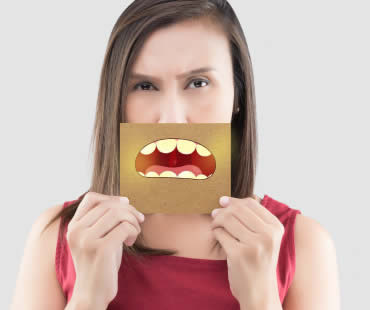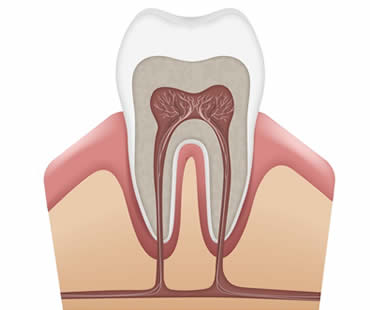
Sep 21, 2023 | Dental Topics 3, Dental Information, Blog
It can be difficult to avoid the signs of aging and lifestyle on your teeth. They can become stained or yellowed over the years, but they don’t have to remain that way. You might choose to have your smile professionally brightened at your dentist’s office, but you’ll want to maintain those pearly whites. Here are some tips you can follow at home to keep your smile bright and beautiful.
Eat crunchy foods.
Crunchy foods are often acidic, which means they naturally help clean your teeth. Examples include apples, pears, celery, and carrots. Crunchy foods are also more abrasive, so the cleaner your teeth will become as they are naturally scrubbed during chewing. The cleaning benefit comes with the crunch, so eat them in their whole form instead of cutting or crushing them up.
Consume dairy products.
Foods like milk, cheese, and yogurt contain minerals such as phosphorus and calcium. These mineral help strengthen your teeth and make them whiter. Your smile will be more appealing and healthier when you include dairy in your diet.
Don’t forget strawberries.
The malic acid in strawberries helps reduce tooth discolorations, and the rough texture of the fruit buffs your tooth enamel. This creates a smoother and brighter look. In addition to eating strawberries, you can also crush them to mix with a half teaspoon of baking soda and a bit of lemon juice. Apply this mixture onto your teeth for five minutes to improve their appearance.
Try baking soda.
As mentioned above, baking soda can help clean teeth if used in moderation. Rub a pinch of baking soda onto your teeth and then rinse it away, or mix it with hydrogen peroxide and salt to naturally brighten your smile.
Use a straw.
If you can’t eliminate dark beverages like wine or colas from your diet, drink them from a straw so that the liquid goes straight into your mouth instead of over your teeth.
Get an electric toothbrush.
Stubborn stains on tooth surfaces are often more responsive to cleaning with an electric toothbrush instead of a manual one.
Schedule your appointment at our Conyers dental office

Nov 26, 2021 | Dental Topics 3, Teeth Whitening, Blog
Having a bright smile is a sign of good health, and it not only makes your face more radiant, but also appear younger! As you age, your teeth lose their outer layer of tooth enamel. The layer underneath is called dentin, and it is more yellow than the surface enamel. Even though this yellowing is natural and expected, everyday things can hasten that unwanted process. With some minor care, you can avoid these pitfalls and keep your smile shining bright.
Most people know that soda, coffee, tea, and red wine can stain teeth; however, it is less commonly known that some foods, such as tomato sauce, basalmic vinegar, and soy sauce can leave unsightly stains. Blackberries, blueberries, and beets all leave residual color on your teeth. You don’t have to stop enjoying these healthy foods, but you can reduce the staining effects by rinsing your mouth after eating and by brushing immediately.
Recent studies have shown that some sports and energy drinks may be worse for your teeth than sugary drinks. Researchers know that these kinds of drinks can erode tooth enamel if consumed long-term. Prevent this erosion by limiting your consumption of these kinds of beverages and by rinsing your mouth with water when you are finished drinking.
Antibacterial mouthwashes containing cetylpyridinium or chlorhexidine can stain your teeth. Some blood pressure medications, antibiotics, antihistamines, and antipsychotic drugs can cause tooth discoloration. Excess iron and fluoride may also cause stains.
Smoking is one of the worst things you can do for your health, but it’s also one of the worst culprits when it comes to discoloring teeth. Tobacco stains penetrate deep into the pits and grooves of tooth enamel. Brushing alone will not remove the stains, and the longer you smoke, the more difficult the stains are to remove.
Talk to your dentist about the elements of your diet and lifestyle that affect the whiteness of your teeth. There are many options available to address the stains and yellowing already present and to strategize to prevent future discoloration.
If you need professional teeth whitening and you live in the Conyers area, contact our office today to schedule a consultation to see if teeth whitening is right for you. We look forward to seeing you.

Jun 6, 2024 | Dental Topics 3, Family Dentistry, Blog
Family dentists care about you and your teeth from the moment you enter the world until the moment you leave it. They want to get to know you – and your teeth – and they have the expertise, knowledge, and skill to care for a child’s baby teeth and for his or her adult teeth. A family dentist focuses on preventative care, aiming to avoid any serious dental complications as you age.
Family dentistry offices are generally friendly, warm, and comfortable. They are specifically designed to put nervous or anxious children and adults at ease. The staff strives to build a relationship with each member of your family, offering a lifetime of dental care and advice on any issues that might arise.
A family dentist in Conyers could treat more than one member of your family in a single visit. Booking more than one appointment per visit is extremely convenient, and it can save you valuable time and effort by allowing you to be seen while your spouse or child is seen in an adjacent area. Don’t drive all over town for your family’s dental needs; see a family dentist instead!
Your family dentist will provide you and your family with the necessary oral hygiene skills needed to have a lifetime of good oral health. Your family dentist will ensure that each member of your family has the latest recommendations regarding brushing, flossing, and rinsing to prevent tooth decay and plaque between appointments.
A family dentist provides all of the services a standard dentist does, such as regular dental cleanings, check-ups, and x-rays. Other preventative treatments include sealants and fluoride treatments. A family dentist is able to treat cavities with fillings or to handle gum disease. Basic cosmetic dentistry procedures like tooth whitening are also offered.
The primary difference for a family dentist is the length of time a family dentist wants to see you. A family dentist can treat you for the rest of your life, and will use the knowledge about you and your particular oral health history to make the best decisions regarding your care in any situation that might arise.
Our dental office is located in Conyers

Sep 16, 2022 | Dental Topics 3, Root Canal Treatment, Blog
Root canal treatment is often a last resort for people who are experiencing tooth pain and want to save their damaged tooth. Although the procedure isn’t nearly as scary or painful as in years past, most patients view the aspect of this treatment with disdain. Recovery from a root canal is often no worse than recovering from a dental filling, but there are some issues that affect your ability to recover from root canal treatment.
Tooth condition
The severity of your tooth’s condition plays a big role in your treatment. If your infection or decay is not too advanced, it may mean an easier recovery than a patient with acute problems requiring extensive root canal treatment. Your dentist will determine the severity of your case and be able to prepare you for what to expect.
Dentist qualifications
Although all dentists are trained to perform root canal treatment, not all of them choose to offer this service as part of their practice. Your dentist may refer you to an endodontist, who is a dentist specializing in root canal treatment. These types of dentists are trained in all aspects of root canals and can handle even the most severe cases. Often, endodontists are so experienced and knowledgeable that they can even help shorten your recovery period after treatment.
After care
No matter which dentist performs your treatment, you should receive detailed instructions about how to care for yourself afterwards. You will be given guidelines about what to eat and what to avoid, how to handle pain, activity restrictions, and other details. There may also be mouth exercises suggested to follow to aid in your recovery. Make sure you keep any follow-up appointments to ensure proper healing.
If you need a dentist in Conyers contact us today

Apr 22, 2022 | Dental Topics 3, Root Canal Treatment, Blog
Root canal treatment is often a last resort for people who are experiencing tooth pain and want to save their damaged tooth. Although the procedure isn’t nearly as scary or painful as in years past, most patients view the aspect of this treatment with disdain. Recovery from a root canal is often no worse than recovering from a dental filling, but there are some issues that affect your ability to recover from root canal treatment.
Tooth condition
The severity of your tooth’s condition plays a big role in your treatment. If your infection or decay is not too advanced, it may mean an easier recovery than a patient with acute problems requiring extensive root canal treatment. Your dentist will determine the severity of your case and be able to prepare you for what to expect.
Dentist qualifications
Although all dentists are trained to perform root canal treatment, not all of them choose to offer this service as part of their practice. Your dentist may refer you to an endodontist, who is a dentist specializing in root canal treatment. These types of dentists are trained in all aspects of root canals and can handle even the most severe cases. Often, endodontists are so experienced and knowledgeable that they can even help shorten your recovery period after treatment.
After care
No matter which dentist performs your treatment, you should receive detailed instructions about how to care for yourself afterwards. You will be given guidelines about what to eat and what to avoid, how to handle pain, activity restrictions, and other details. There may also be mouth exercises suggested to follow to aid in your recovery. Make sure you keep any follow-up appointments to ensure proper healing.
Our dental office is located in Conyers

Feb 1, 2024 | Dental Topics 3, Dental Information, Blog
Modern lifestyles can be extremely stressful as many people have to deal with deadlines, demands and other frustrations that make up daily life. This can be an issue if you’re constantly under stress as it may affect your health. There are numerous health conditions that can be affected by high stress levels, and one of these is teeth grinding.
What Is Teeth Grinding?
Teeth grinding, or bruxism, is a condition that causes you to clench and grind your teeth together. It normally occurs during sleep so you may not even realize you have bruxism. This condition is likely to be identified by your family dentist in Conyers due to teeth becoming worn down and chipped, or quite often a sleeping partner will complain about the grinding noise during the night.
What Does Stress Have To Do with Bruxism?
Teeth grinding has been linked to high levels of stress and anxiety. It’s been shown that people under stress are more likely to grind their teeth, particularly if they don’t have any coping mechanisms.
How Could Teeth Grinding Affect Me?
Teeth grinding can have more of an effect than you might imagine. It can cause teeth to become cracked, sensitive or even loose. Excessive grinding can damage the gums and bone surrounding your teeth, or may cause a painful disorder called TMD. This affects the jaw joints or temporomandibular joints, and can cause headaches, earache and facial pain.
How is Bruxism Treated?
Your dentist in Conyers is likely to recommend a custom-made night guard which is worn while sleeping to protect your teeth and jaws from any further damage. It works through preventing your teeth from coming into contact. Additionally, you may be prescribed a muscle relaxant to help prevent clenching. It can be helpful to reduce stress levels through various measures which can include exercise, yoga, meditation or stress counseling.
We treat patients from Conyers and the surrounding area







